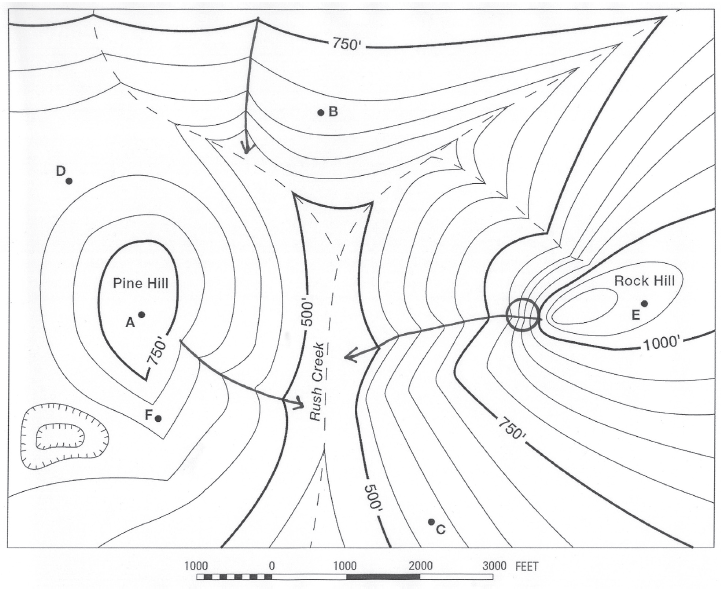Why is talc a slippery mineral whereas quartz is a hard mineral?
a. Quartz is composed of sheet structures, whereas talc is composed of single chain structures.
b. Quartz has sheet structures that are held together very strongly by magnesium ions, whereas talc lacks such strong bonds between its sheet structures.
c. Quartz only has silicon-oxygen bonds, which are equally strong in all directions, whereas talc is made of sheet structures.
d. Quartz is composed of single chain structures, whereas talc is composed of sheet structures.
e. Talc only has silicon-oxygen bonds, which are equally strong in all directions, whereas quartz is made of sheet structures.
c. Quartz only has silicon-oxygen bonds, which are equally strong in all directions, whereas talc is made of sheet structures.
You might also like to view...
Which lettered point has the highest elevation?
The question is based on this contour line map with elevations shown in feet.
• North is to the top of the map.
• Streams are shown with dashed lines.
• A graphic scale for measuring horizontal distances is shown below the map.
• Estimate elevations between contour lines to the nearest half-contour interval; assume that the top of a
hill is one-half-contour interval higher than the highest contour line shown.

What will be an ideal response?
Where is the top fishing area in the world ocean located?
a. Northwest Pacific b. Southeast Pacific c. Western Central Pacific d. Northeast Atlantic
e. Eastern Indian OceanIPAT stands for ________
A) Impact, People, Affluence, and Technology B) Industry, People, Attitude, and Teaching C) Industry, Population, Attitude, and Teaching D) Impact, Population, Attitude, and Technology E) Impact, Population, Affluence, and Technology
When was the Younger Dryas period?
A. about 1,200 years ago B. about 120,000 years ago C. about 120 years ago D. about 12,000 years ago